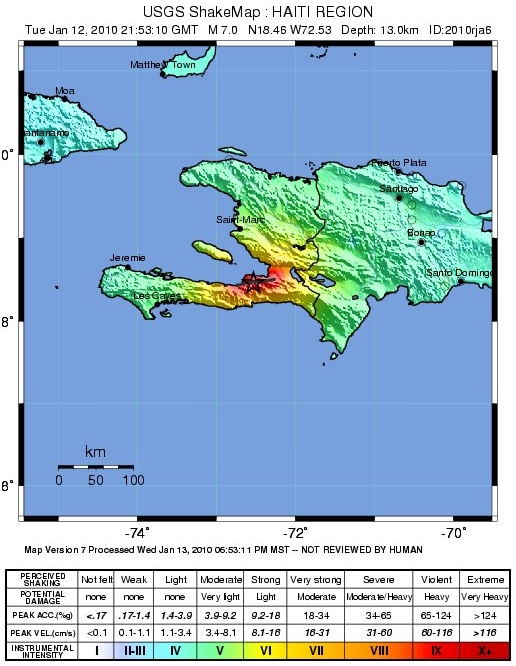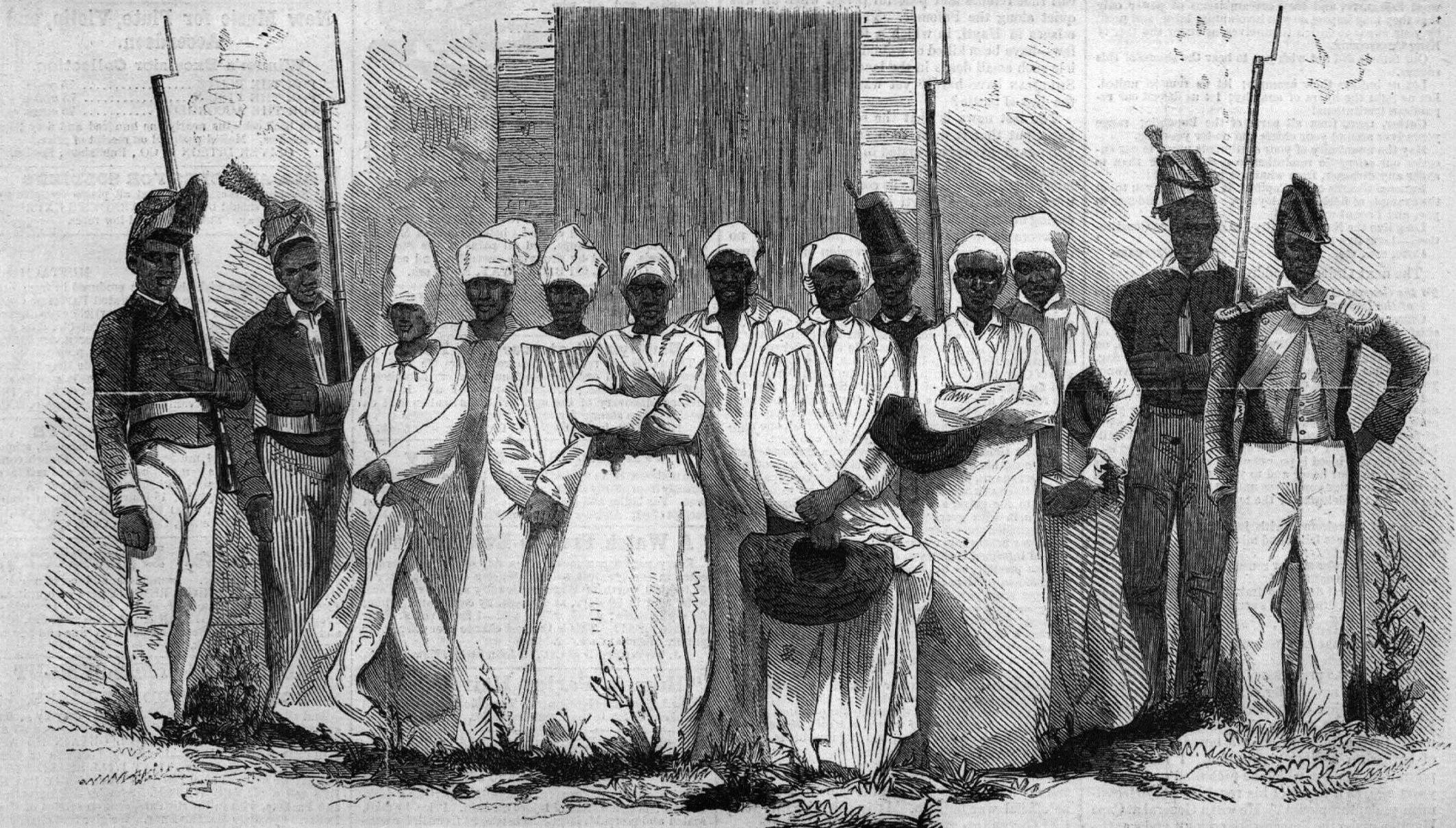|
Gonâve Island
Gonâve Island or Zile Lagonav (, ; also ''La Gonâve'') is an island of Haiti located west-northwest of Port-au-Prince in the Gulf of Gonâve. It is the largest of the Hispaniolan satellite islands. The island is an arrondissement (''Arrondissement de La Gonâve'') or Ouest-Insulaire in the Ouest and includes the communes of Anse-à-Galets and Pointe-à-Raquette. Etymology La Gonâve or Gonave is a francized form of ''Guanabo'', the Taíno and later Spanish name for the island and region. History Taíno period The indigenous Taínos called the island ''Guanabo.'' Under the leadership of Hatuey, the island was the last refuge of the natives after the invasion of the Europeans. European period No major French or Spanish settlement was built in La Gonâve. During the colonial period, the island was uninhabited by colonists, which led the indigenous Taínos to seek refuge there after early battles with the Spanish. Runaway slaves in the French period, too, sometimes sought o ... [...More Info...] [...Related Items...] OR: [Wikipedia] [Google] [Baidu] |
Gulf Of Gonâve
The Gulf of Gonâve (, ; ) is a large gulf of the Caribbean Sea along the western coast of Haiti. Haiti's capital city, Port-au-Prince, is located on the coast of the gulf. Other cities on the gulf coast include Gonaïves, Saint-Marc, Léogane Miragoâne, and Jérémie Jérémie (; ) is a commune and capital city of the Grand'Anse department in Haiti. It had a population of about 134,317 at the 2015 census. It is relatively isolated from the rest of the country. The Grande-Anse River flows near the city. .... Several islands are located in the gulf, the largest being Gonâve Island, followed by the much smaller Cayemites. The Gulf is more than 500 km in length from Mole-Saint-Nicolas to Abricots and it consist of more than a dozen bays and harbors. The Port-au-Prince Bay is the largest in the country and one of the biggest in the Caribbean. References Bodies of water of Haiti Gulfs of the Caribbean Sea {{Haiti-geo-stub ... [...More Info...] [...Related Items...] OR: [Wikipedia] [Google] [Baidu] |
Toussaint Louverture
François-Dominique Toussaint Louverture (, ) also known as Toussaint L'Ouverture or Toussaint Bréda (20 May 1743 – 7 April 1803), was a Haitian general and the most prominent leader of the Haitian Revolution. During his life, Louverture first fought and allied with Spanish forces against Saint-Domingue Royalists, then joined with Republican France, becoming Governor-General-for-life of Saint-Domingue, and lastly fought against Bonaparte's republican troops. As a revolutionary leader, Louverture displayed military and political acumen that helped transform the fledgling slave rebellion into a revolutionary movement. Along with Jean-Jacques Dessalines, Louverture is now known as one of the "Fathers of Haiti". Toussaint Louverture was born as a slave in the French colony of Saint-Domingue, now known as Haiti. He was a devout Catholic, and was manumitted as an ''affranchi'' (ex-slave) before the French Revolution, identifying as a Creole for the greater part of hi ... [...More Info...] [...Related Items...] OR: [Wikipedia] [Google] [Baidu] |
Limestone
Limestone is a type of carbonate rock, carbonate sedimentary rock which is the main source of the material Lime (material), lime. It is composed mostly of the minerals calcite and aragonite, which are different Polymorphism (materials science), crystal forms of calcium carbonate . Limestone forms when these minerals Precipitation (chemistry), precipitate out of water containing dissolved calcium. This can take place through both biological and nonbiological processes, though biological processes, such as the accumulation of corals and shells in the sea, have likely been more important for the last 540 million years. Limestone often contains fossils which provide scientists with information on ancient environments and on the evolution of life. About 20% to 25% of sedimentary rock is carbonate rock, and most of this is limestone. The remaining carbonate rock is mostly Dolomite (rock), dolomite, a closely related rock, which contains a high percentage of the mineral Dolomite (mine ... [...More Info...] [...Related Items...] OR: [Wikipedia] [Google] [Baidu] |
Over-exploitation
Overexploitation, also called overharvesting or ecological overshoot, refers to harvesting a renewable resource to the point of diminishing returns. Continued overexploitation can lead to the destruction of the resource, as it will be unable to replenish. The term applies to natural resources such as water aquifers, grazing pastures and forests, wild medicinal plants, fish stocks and other wildlife. In ecology, overexploitation describes one of the five main activities threatening global biodiversity. Ecologists use the term to describe populations that are harvested at an unsustainable rate, given their natural rates of mortality and capacities for reproduction. This can result in extinction at the population level and even extinction of whole species. In conservation biology, the term is usually used in the context of human economic activity that involves the taking of biological resources, or organisms, in larger numbers than their populations can withstand. The t ... [...More Info...] [...Related Items...] OR: [Wikipedia] [Google] [Baidu] |
Overgrazing
Overgrazing occurs when plants are exposed to intensive grazing for extended periods of time, or without sufficient recovery periods. It can be caused by either livestock in poorly managed agricultural applications, game reserves, or nature reserves. It can also be caused by immobile, travel restricted populations of native or non-native wild animals. Overgrazing reduces the usefulness, productivity and biodiversity of the land and is one cause of desertification and erosion. Overgrazing is also seen as a cause of the spread of invasive species of non-native plants and of weeds. Degrading land, emissions from animal agriculture and reducing the biomass in a ecosystem contribute directly to climate change between grazing events. Successful planned grazing strategies have been in support of the American bison of the Great Plains, or migratory wildebeest of the African savannas, or by holistic planned grazing. [...More Info...] [...Related Items...] OR: [Wikipedia] [Google] [Baidu] |
2010 Haiti Earthquake
The 2010 Haiti earthquake was a catastrophic Moment magnitude scale, magnitude 7.0 Mw earthquake that struck Haiti at 16:53 local time (21:53 UTC) on Tuesday, 12 January 2010. The epicenter was near the town of Léogâne, Ouest (department), Ouest department, approximately west of Port-au-Prince, Haiti's capital. By 24 January, at least 52 aftershocks measuring 4.5 or greater had been recorded. An estimated three million people were affected by the quake. Death toll estimates range from 100,000 to about 160,000 to Haitian government figures from 220,000 to 316,000, although these latter figures are a matter of some dispute. The earthquake is the deadliest natural disaster of the 21st century for a single country. The government of Haiti estimated that 250,000 residential area, residences and 30,000 commercial buildings had collapsed or were severely damaged. Haiti's history of External debt of Haiti, national debt, prejudicial trade policies by other countries, and for ... [...More Info...] [...Related Items...] OR: [Wikipedia] [Google] [Baidu] |
The Rock Connection
The Rock Connection is the twenty-seventh solo studio album by Cliff Richard. Released in November 1984 on EMI, the album is a part studio, part compilation album. It includes seven studio tracks recorded exclusively for the album, five tracks from the previous year's limited release album '' Rock 'n' Roll Silver'', one previously released single, and one B-side from 1980. The album reached number 43 on the UK Albums Chart. Two singles were released to promote the album. "Shooting from the Heart" was released in October 1984 as the lead single, but only reached number 51 on the UK Singles Chart. "Heart User" was followed in January 1985 and it only reached number 46. However, a remix of the hit single "She Means Nothing to Me" - a duet with Phil Everly of the Everly Brothers featuring Mark Knopfler - was also included although released almost two years prior. Originally released in January 1983 and lifted from Phil Everly's self-titled solo album, "She Means Nothing to Me" made i ... [...More Info...] [...Related Items...] OR: [Wikipedia] [Google] [Baidu] |
Cliff Richard
Sir Cliff Richard (born Harry Rodger Webb; 14 October 1940) is a British singer and actor. He has total sales of over 21.5 million singles in the United Kingdom and, as of 2012, was the third-top-selling artist in UK Singles Chart history, behind the Beatles and Elvis Presley. Richard was originally marketed as a rebellious rock and roll singer in the style of Presley and Little Richard. With his backing group, the Shadows, he dominated the British popular music scene in the pre-Beatles period of the late 1950s to early 1960s. His 1958 hit single "Move It" is often described as Britain's first authentic rock and roll song. In the early 1960s, he had a successful screen career with films including ''The Young Ones (1961 film), The Young Ones'', ''Summer Holiday (1963 film), Summer Holiday'' and ''Wonderful Life (1964 film), Wonderful Life'' and his own television show at the BBC. Increased focus on his Christian faith and subsequent softening of his music led to a more M ... [...More Info...] [...Related Items...] OR: [Wikipedia] [Google] [Baidu] |
Fabre Geffrard
Guillaume Fabre Nicolas Geffrard (; 19/23 September 1806 – 31 December 1878) was a Mulatto Haitians, mulatto general in the Military of Haiti, Haitian army and President of Haiti from 1859 until his deposition in 1867. On 18 April 1852, Faustin Soulouque made him Duke of Tabara. After collaborating in a coup to remove Faustin Soulouque from power in order to return Haiti to the social and political control of the colored elite, Geffrard was made president in 1859. To placate the peasants he renewed the practice of selling state-owned lands and ended a schism with the Roman Catholic Church which then took on an important role in improving education. After surviving several rebellions, he was overthrown by Major Sylvain Salnave in 1867. Geffrard was the first head of state of Haiti to have been born in the 19th century, as well as the first to be born after independence. Life prior to presidency Fabre Geffrard was born on September 19/September 23, 1806, in Anse-à- ... [...More Info...] [...Related Items...] OR: [Wikipedia] [Google] [Baidu] |
Faustin E
Faustin is a given name and surname. Notable people called Faustin include: Given name: *Faustin Baha (born 1982), Tanzanian long-distance runner who specializes in the half marathon and marathon * Faustin Betbeder, French illustrator, caricaturist and prototypical comics artist * Faustin Birindwa (1943–1999), Congolese politician * Faustin Boukoubi (born 1954), Gabonese politician, President of the National Assembly of Gabon * Faustin Butéra (born 1955), Rwandan sprinter *Faustin Habineza (born 1959), Rwandan mathematician, educator, politician * Jean Marie Faustin Godefroid Havelange (1916–2016), Brazilian lawyer, businessman and athlete *Faustin Hélie (1799–1884), French jurist and a leading reformer of criminal law * Faustin Herr (1834–1849), Austrian painter, lithographer, and miniaturist * Faustin Linyekula (born 1974), Congolese dancer, choreographer of contemporary dance * Faustin Luanga (born 1964), Congolese politician and career diplomat * Faustin Mparabanyi (bo ... [...More Info...] [...Related Items...] OR: [Wikipedia] [Google] [Baidu] |






